James Balm 11 Aug 2014
7We’ve all heard the cliché, “a picture tells a thousand words”, but there is real value in using images to promote scientific content. Images help us learn, images grab attention, images explain tough concepts, and inspire.
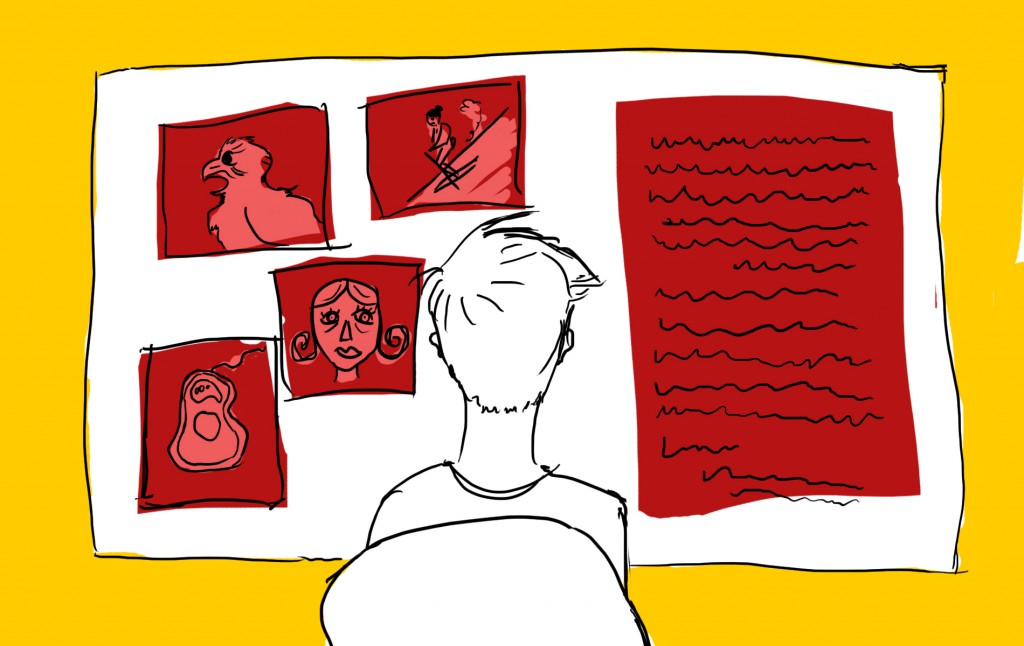 Why do we love images so much?
Why do we love images so much?We are very visual creatures. A large percentage of the human brain dedicates itself to visual processing. Our love of images lies with our cognition and ability to pay attention. Images are able to grab our attention easily, we are immediately drawn to them. Think about this blog, for example: did you look at the words first, or the image?
We process images at an alarming speed. When we see a picture, we analyse it within a very short snippet of time, knowing the meaning and scenario within it immediately. The human brain is able to recognise a familiar object within 100 milliseconds. People tend to recognise familiar faces within 380 milliseconds, which is pretty speedy.
Bright colors capture our attention because our brains are wired to react to them. Our vision senses are by far our most active of the senses. This may be thanks to our evolution. Quick processing of visual information would have saved our ancestors from the attack of a predator or during a hunt for food. A gatherer would need to be able to identify certain shades of red berries during their forage. These primitive behaviors come into play even now in our everyday lives. This is often a fact that advertisers use to their advantage.
Images on social media
As Social Media Assistant at BioMed Central, one thing I’ve realised is how vital images are in my role. A post on social media accompanied by an image is 10 times more likely to receive engagement. Visuals are one way of grabbing your audience’s attention and gaining interaction, especially on Facebook. With this in mind, you can use these images to drive users to research.
And what if you have limited characters to write with? Twitter only allows users 140 characters of text, which can sometimes make it difficult to convey a complex message. With an image, you can help explain these tough concepts without taking up too much space. Here’s an example:
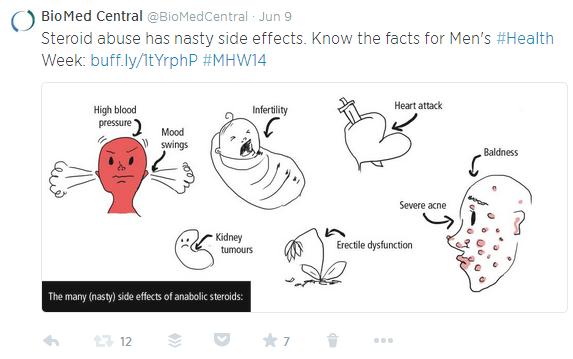
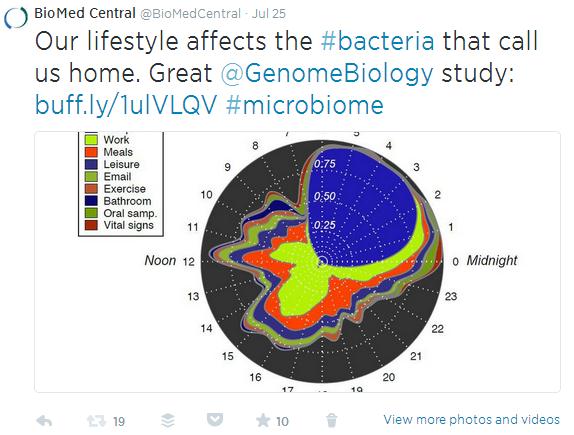
Images also have the potential to get an emotional response from your audience. This is necessary when if you want the work you’re promoting to have an impact on users.
Tumblr
We are seeing plenty of researchers and institutions taking advantage of images, especially through the microblogging service, Tumblr. Publishers, institutes, researchers, and schools are using Tumblr to promote scientific findings, with the help of vibrant and appealing images. Tumblr is also a great way to bring awareness to the research itself.
There are a selection of brilliant Tumblr blogs for science communication. There’s the Great British Bioscience (BBSRC) blog, providing bite-sized bioscience highlights. You can get your daily dose of biomedical images with the MRC’s Biomedical Picture of the Day (BPoD) blog. Meanwhile, Biocanvas, the blog, unleashes the true beauty of science with dazzling photos that could easily be pieces of artwork. After something more unusual? Try this scientific illustration Tumblr.
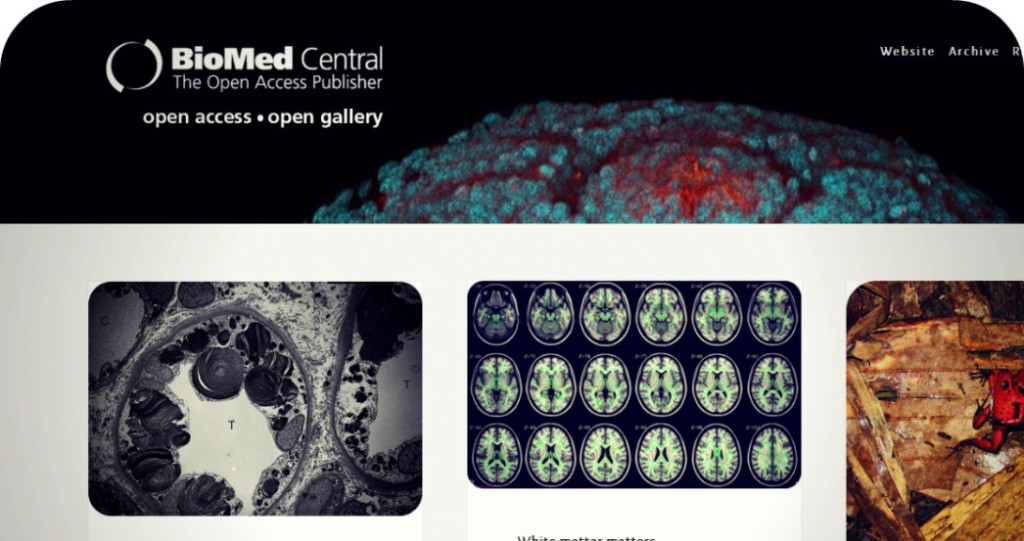
With this in mind, we have started our own BioMed Central Tumblr, for scientific and medical images. We want to show that science can be beautiful.
Images help educate
In a world where we are bombarded by stimuli, we often seek the easiest and most fluent way of acquiring and learning information. Reading can be a slow and time-consuming activity. It takes a lot longer to read a long sentence than to analyse a visual scene.
At school we are expected to scour our textbooks and memorise sentences word-for-word. This isn’t always the best tactic. Many of us are visual learners, who memorise content more effectively if it happens to be image-based.
This is what makes infographics so popular: they crunch down data and findings and present them in an easy to digest manner.
The images, diagrams, and figures in infographics make the learning process more fluid. Funnily enough, here’s an infographic explaining why we all love infographics.
Images help tell a story
Sometimes scientific findings, even the important ones, just don’t seem personal to us as individuals. People may not feel concerned about a certain disease or condition because they are not emotionally invested in it. Now, this isn’t because we’re all stone hearted monsters. It’s because sometimes these findings just aren’t reaching out to us in the way they ought to.
Images help us become involved. With images, we are seeing the science, rather than standing on the outskirts. The images help contribute to the storytelling process that can make science more engaging.
Do-It-Yourself (or ask a friend)
Just because you’re not an artist, doesn’t mean you’re banned from doodling. Art and science are not mutually exclusive. Sketching out a diagram, comic strip, or illustration, can help provide yet another channel to explain complex work.
“But I’m terrible at drawing”, I hear you say. Well, you don’t have to be a brilliant artist to help get your message across. People appreciate custom content, no matter its quality or its execution, as long as the information is reliable.
Thanks to open access and open data, we are able to construct infographics and custom content with raw information. With all these findings being open to the public, we are able to combine these ingredients and create a visual product that will engage and educate others: another way to put this research to good use.
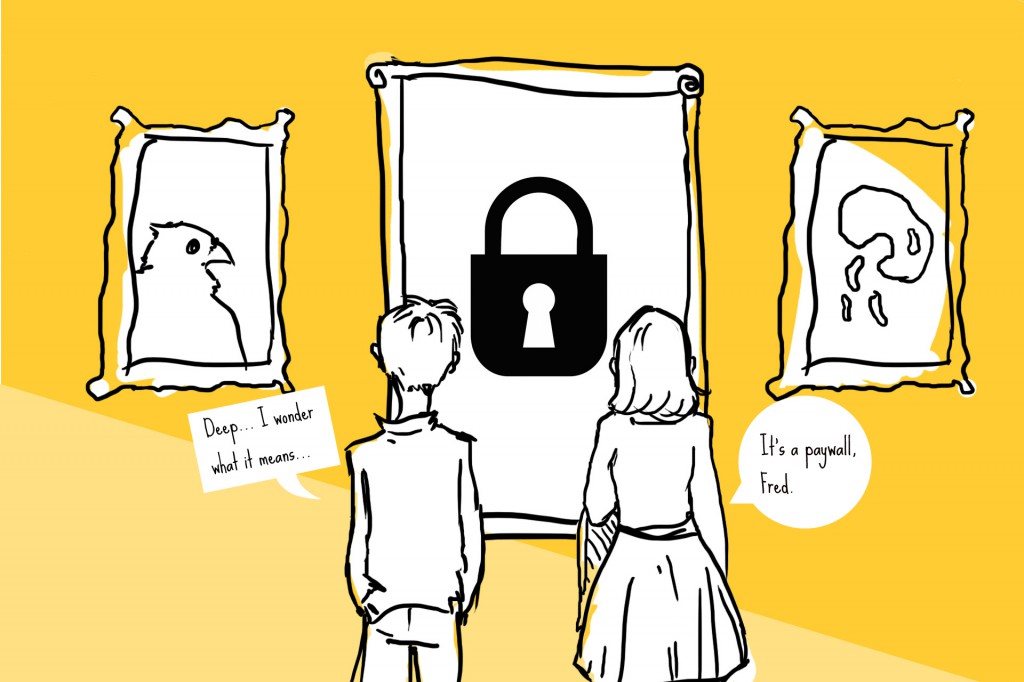
Images are a vital part of science communication, and shouldn’t be cast out in favour of long blocks of text. In order to break down the often complex messages of science, we need the help of visuals.
James Balm is Social Media Assistant for BioMed Central. He writes regularly for the BioMed Central blog and you can also find him on Twitter – @justbalmy.
Topics:Open AccessTags: science communicationShare this post < PREVIOUS POSTA way forward for quality peer review05 Aug 2014NEXT POST >Announcing the Great Galaxy GigaScience (G3) Open Science Workshop21 Aug 2014
View the latest posts on the Research in progress bloghomepage
7 Comments About Latest PostsSorry. No data so far.
Most Shared PostsTweets by @BioMedCentral ArchivesView archives